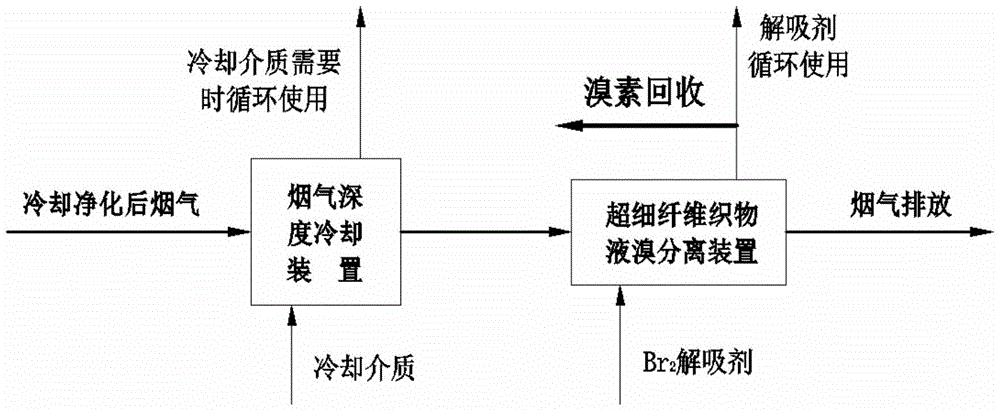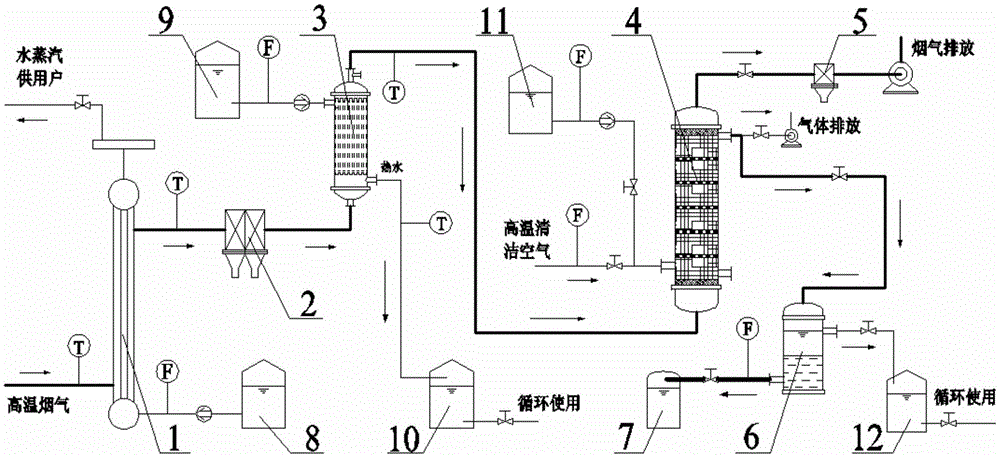Method for separating and recycling Br2 in flue gas in after-burning area
A technology of separation and recovery and post-combustion zone, which is applied in the field of inorganic bromine, can solve the problems of molecular sieve regeneration trouble, molecular sieve corrosion, loss, etc., and achieve the effect of low operating cost, strong corrosion resistance, and unified economic benefits
- Summary
- Abstract
- Description
- Claims
- Application Information
AI Technical Summary
Problems solved by technology
Method used
Image
Examples
Embodiment Construction
[0027] The present invention will be further described in detail below in conjunction with the accompanying drawings and embodiments.
[0028] Process flow diagram of the present invention is as figure 1 Shown, the equipment flow diagram of the present invention is as figure 2 shown. Bromine-containing high-temperature flue gas from the high-temperature combustion chamber and the second combustion chamber (about 1000-1400 °C; the raw material contains 6.5wt% Br, and the inorganic Br content in the flue gas is about 11g / Nm 3 ) enters the water-cooled two-stage cooling device 1 of indirect heat exchange, and is cooled to about 200°C in two stages (about 80% of the HBr in the flue gas is converted into Br 2 ), and then enter the flue gas purification device 2 to remove fly ash, NOx, etc. in the flue gas. The residence time in the device exceeds 6 minutes, and about 93% of the HBr in the flue gas is converted into Br 2 , Br in flue gas 2 The concentration is about 5.2g / Nm 3...
PUM
 Login to View More
Login to View More Abstract
Description
Claims
Application Information
 Login to View More
Login to View More - R&D
- Intellectual Property
- Life Sciences
- Materials
- Tech Scout
- Unparalleled Data Quality
- Higher Quality Content
- 60% Fewer Hallucinations
Browse by: Latest US Patents, China's latest patents, Technical Efficacy Thesaurus, Application Domain, Technology Topic, Popular Technical Reports.
© 2025 PatSnap. All rights reserved.Legal|Privacy policy|Modern Slavery Act Transparency Statement|Sitemap|About US| Contact US: help@patsnap.com


